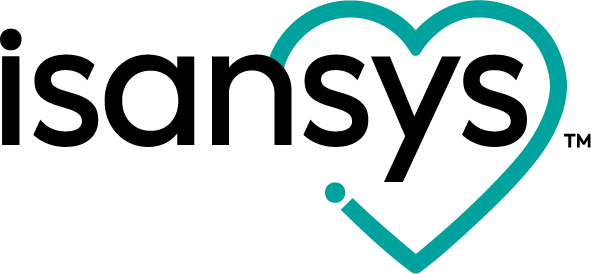
Blog post -
A New Beginning in Healthcare: One Year On
By Freya Ingram, Digital and Social Media Coordinator, Isansys Lifecare
In May 2020 we were talking about ‘A New Beginning’ in healthcare set in motion by a global crisis. Continuing as usual was no longer an option – the rapid transformation of healthcare became crucial to the survival of healthcare systems worldwide. Now, as the UK steps back into ‘normal’ life, we are again taking a moment to reflect on the transformative stimulus of COVID-19 with regards to digital transformation. There is now a fine balance to be struck between the necessary return of more stringent regulatory requirements, and the need to maintain the appetite for transformation vital to continuing to build resilience into existing models.
Despite the easing of restrictions, there is a need to recognise the continued urgency of the situation, bearing in mind the fragility of our health system that was exposed over the past year. As predicted by Public Health England, we are now moving into an unusual summer of ‘winter’ infections. July has already been marked by the increase in young children in A&E presenting symptoms of illnesses including Respiratory Syncytial Virus (RSV), placing additional strain on already stretched critical care facilities, with hospitals in Greater Manchester opening extra critical care beds[1] and operations being cancelled in Birmingham[2].
Demand–capacity mismatch
This renewed pressure comes alongside widespread warnings of a burnout crisis within the health system. The recent report on workforce burnout and resilience in the NHS and the social care sector from the Health and Social Care Committee highlighted the exponential increase in physical and emotional strain on care teams as a result of the pandemic[3], an exacerbation of existing issues, and a workforce crisis posing a risk to the safety of both healthcare professionals and patients alike.
The report includes oral evidence from Chris Hopson, Chief Executive of NHS Providers:
For the last 10 years we have had a mismatch between rapidly rising demand and capacity. Capacity simply has not risen in the same way. The way we tried to close that demand/capacity mismatch was by asking our staff to work harder and harder. The reality is that the demand/capacity mismatch was already showing up before we went into [the pandemic][4].
A dramatic change is urgently needed to address this ‘mismatch’. The report recommends a complete overhaul of the way the NHS does workforce planning:
the least we can do for staff is to show there is a long-term solution to those shortages […] We may not be able to solve the issues of burnout overnight, but we can at least give staff confidence that a long-term solution is in place…[5]
However, there of course remains a need to make immediate changes to address this crisis in the here and now. Addressing the ‘mismatch’ identified by Hopson is one of the fundamental premises under which Isansys came into being in 2010, and now with ever increasing urgency, we remain focused on the task of helping healthcare providers build immediate resilience into how they care. The report talks of ‘capturing and disseminating the innovations’ which came to the fore during the pandemic[6]. For us, this means putting in place rigorously tested technology with proven efficacy to support healthcare systems globally, allowing us to respond proactively to future events of this magnitude.
As we all recover and re-adjust, this is the time to go back to basics and assess the systems and products that have been incorporated into how healthcare is delivered. This means asking the fundamental questions of safety and efficacy that allow us to help deliver exceptional care in the NHS and elsewhere. This is the commitment we have made for over a decade at Isansys, and a responsibility on which we will never compromise. Efficacy, safety and clinical relevance are at the centre of everything we do. We continuously test, improve and co-develop our technology with the clinicians, nurses and patients we are working with, as well as exploring the possibilities of the Patient Status Engine as a powerful tool in clinical research. This is all done whilst ensuring that rigorous quality management systems, and regulatory processing for the design, testing and validation of our products are in place. Ultimately, rigorous clinical validation guarantees data accuracy, device safety, and reliable performance in accordance with the intended use. The continuing appetite for digital change is incredibly exciting, and it is the companies that have invested the time in this process from the outset that are leading the way for change.
A new way of caring
The way we envisage this change has never been about new products, systems or processes alone. For us, digital transformation is fundamentally about a new way of caring. It’s care that puts patients, clinicians and nurses at the centre of innovation. This is both about giving patients agency within their own healthcare journey, as well as providing healthcare professionals with the tools and insights required for enhanced, connected and co-ordinated clinical decision making based on extensive, accurate data. We are enabling the patient–physician relationship to be reconceptualized – an interaction that is no longer bound by physical location; what we think of as ‘hospital’ in the future will no longer necessarily be a physical space. Reimagining this clinical pathway means people who do not need to be in hospital can receive the same standard of care at home.
This is not just a vision for the future – these are changes we are seeing right now. For us at Isansys, digital transformation is a baby in the neonatal ward having cuddles from mum and dad free from trailing wires. It’s a child going to the playroom in hospital to choose their favourite toy. It’s a young person deciding when they get up rather than having their movements dictated by wired machines. It’s a patient being able to go home from hospital early, whilst still being monitored as if in a high dependency hospital ward. It’s a nurse being able to sit down and chat to a patient in the knowledge that they will be alerted as soon as anyone on the ward deteriorates. And ultimately, it’s about potentially life-threating events being averted as a result of timely intervention.
Our vision for healthcare, resilient to future challenges on the scale that we have witnessed over the past year, is inextricably bound to our commitment to improving people’s lives as patients, as healthcare professionals, and as empowered citizens.
